
Tyburn was a manor (estate) in the county of Middlesex, England, one of two which were served by the parish of Marylebone. Tyburn took its name from the Tyburn Brook, a tributary of the River Westbourne. The name Tyburn, from Teo Bourne, means 'boundary stream'.
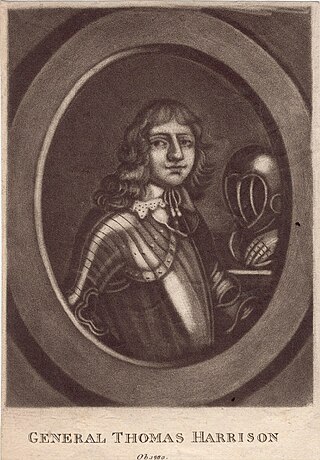
Major-General Thomas Harrison, baptised 16 July 1616, executed 13 October 1660, was a prominent member of the radical religious sect known as the Fifth Monarchists, and a soldier who fought for Parliament and the Commonwealth in the Wars of the Three Kingdoms. One of those who approved the Execution of Charles I in January 1649, he was a strong supporter of Oliver Cromwell before the two fell out when The Protectorate was established in 1653. Following the 1660 Stuart Restoration, he was arrested, found guilty of treason as a regicide, and sentenced to death. He was hanged, drawn and quartered on 13 October 1660, facing his execution with a courage noted by various observers, including the diarist Samuel Pepys.
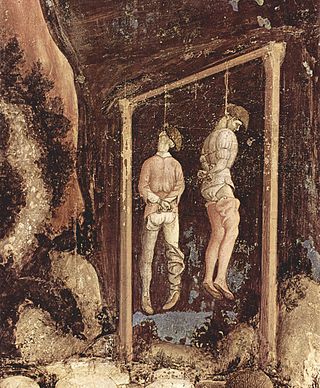
Hanging is killing a person by suspending them from the neck with a noose or ligature. Hanging has been a common method of capital punishment since the Middle Ages, and is the primary execution method in numerous countries and regions. The first known account of execution by hanging is in Homer's Odyssey. Hanging is also a method of suicide.

James Scott, 1st Duke of Monmouth, 1st Duke of Buccleuch, was a Dutch-born English nobleman and military officer. Originally called James Crofts or James Fitzroy, he was born in Rotterdam in the Netherlands, the eldest illegitimate son of Charles II of England with his mistress Lucy Walter.
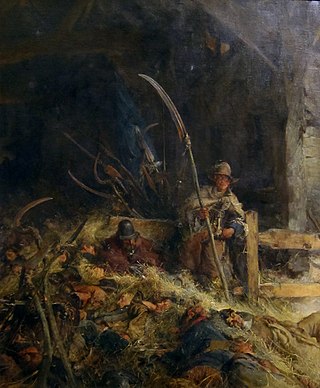
The Monmouth Rebellion, also known as the Pitchfork Rebellion, the Revolt of the West or the West Country rebellion, was an attempt to depose James II, who in February 1685 succeeded his brother Charles II as king of England, Scotland and Ireland. A group of dissident Protestants led by James Scott, 1st Duke of Monmouth, eldest illegitimate son of Charles II, opposed James largely due to his Catholicism.

Albert Pierrepoint was an English hangman who executed between 435 and 600 people in a 25-year career that ended in 1956. His father Henry and uncle Thomas were official hangmen before him.

William Marwood was a British state hangman. He developed the technique of hanging known as the "long drop".

The Rye House Plot of 1683 was a plan to assassinate King Charles II of England and his brother James, Duke of York. The royal party went from Westminster to Newmarket to see horse races and were expected to make the return journey on 1 April 1683, but because there was a major fire in Newmarket on 22 March, the races were cancelled, and the King and the Duke returned to London early. As a result, the planned attack never took place.

Richard Brandon was the common executioner of London from 1639 to 1649, who inherited his role from his father Gregory Brandon and was sometimes known as Young Gregory. Richard Brandon is often named as the executioner of Charles I, though the executioner's identity is not definitely known.
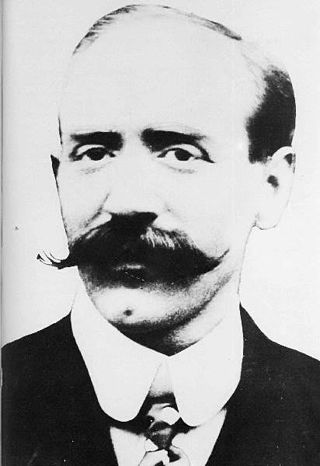
John Ellis was a British executioner for 23 years, from 1901 to 1924. His other occupations were as a Rochdale hairdresser and newsagent.

William Russell, Lord Russell was an English politician. He was a leading member of the Country Party, forerunners of the Whigs, who during the reign of King Charles II, laid the groundwork for opposition in the House of Commons to the accession of an openly Catholic king in Charles's brother James. This ultimately resulted in Russell's execution for treason, almost two years before Charles died and James acceded to the throne.
James Berry was an English executioner from 1884 until 1891. Berry was born in Heckmondwike in the West Riding of Yorkshire, where his father worked as a wool-stapler. His most important contribution to the science of hanging was his refinement of the long drop method developed by William Marwood, whom Berry knew quite well. His improvements were intended to diminish mental and physical suffering and some of them remained standard practice until the abolition of capital punishment for murder.
Paskah Rose, also known as Pascha Rose, was an English executioner briefly during 1686, successor to Jack Ketch.
William Cragh was a medieval Welsh warrior and supporter of Rhys ap Maredudd, lord of the lands of Ystrad Tywi, in his rebellion against King Edward I of England. Captured in 1290 by the son of William de Briouze, the Cambro-Norman Lord of Gower, he was tried and found guilty of having killed thirteen men. Cragh was hanged just outside Swansea within sight of de Briouze's Swansea Castle, twice, as the gallows collapsed during his first hanging. Lady Mary de Briouze interceded on Cragh's behalf and prayed to the deceased Bishop of Hereford, Thomas de Cantilupe, requesting him to ask God to bring Cragh back from the dead. Cragh began to show signs of life the day after his execution and over the subsequent few weeks made a full recovery, living at least another eighteen years.

William Calcraft was a 19th-century English hangman, one of the most prolific of British executioners. It is estimated in his 45-year career he carried out 450 executions. A cobbler by trade, Calcraft was initially recruited to flog juvenile offenders held in Newgate Prison. While selling meat pies on streets around the prison, Calcraft met the City of London's hangman, John Foxton.
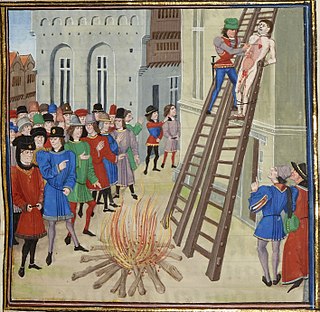
To be hanged, drawn and quartered became a statutory penalty for men convicted of high treason in the Kingdom of England from 1352 under King Edward III (1327–1377), although similar rituals are recorded during the reign of King Henry III (1216–1272). The convicted traitor was fastened to a hurdle, or wooden panel, and drawn by horse to the place of execution, where he was then hanged, emasculated, disembowelled, beheaded, and quartered. His remains would then often be displayed in prominent places across the country, such as London Bridge, to serve as a warning of the fate of traitors. For reasons of public decency, women convicted of high treason were instead burned at the stake.

James Billington was a hangman for the British government from 1884 until 1901. He was the patriarch of the Billington family of executioners. Billington died at home from emphysema in the early hours of 13 December 1901, ten days after having executed Patrick McKenna, a man he knew well.














